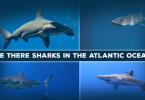Across the globe, dolphins thrive in a wide range of aquatic habitats, from the warm tropical seas to the icy waters of the Arctic, dolphins have adapted to various habitats, showcasing their resilience and adaptability. This article will explore the geographical spread of dolphins, their habitats, and the various living conditions they encounter.
Geographical Spread of Dolphins: Habitats and Living Conditions
Several species of dolphins have evolved to thrive in specific habitats, based on various factors like food availability, water temperature, and shelter from predatory animals. the diverse habitat along with the varied living conditions of dolphins are explored below:
A Diverse Range of Habitats
Dolphins inhabit a diverse range of habitats from seas, oceans, and major river systems to the icy regions of the Arctic and Antarctic. The most common habitats of dolphins are:
1. Coastal Waters
Many species of dolphins thrive in the coastal waters because these areas offer a rich source of food such as fish, squids, crabs, or lobsters, that are essential for their health as well as for survival. Coastal dolphins are usually sighted near the shoreline and often interact with humans and develop friendly relations, making them a favorite subject for marine enthusiasts and tourists.
2. Open Ocean
Open water habitat is another common spot for dolphins to visit or live there. The dolphins of these areas have streamlined bodies and powerful tails, which help them to navigate through the extended waters. These creatures are also skilled hunters and form a pod to maximize their chances of catching prey.
3. Coral Reefs
Rainforests or coral reefs provide a unique habitat for some dolphin species. These areas offer protection, shelter, and an abundance of food supply. Dolphins that inhabit these areas are usually smaller in size and possess excellent flexibility to navigate through intricate reef structures.
4. Estuaries and Bays
The blend of estuaries and bays offers a unique blend of habitats for dolphins because these areas provide access to both marine and freshwater resources, making them rich feeding grounds. The inhabitants of estuaries and bays are skilled navigators and are capable of adapting to fluctuating salinity levels and tidal movements. However, dolphins may also be exposed to contaminants and environmental changes driven by human activity.
5. Polar Regions
Though, very few species of dolphins such as Killer Whales have remarkable adaptability to live in the polar environment. Orcas are apex predators that live in the extremely cold environment of the Antarctic and the Arctic region Their social structures and specialized hunting techniques allow them to conquer even the harshness of environments.
Living Conditions and Adaptations
The ability of dolphins to live in a diverse range of habitats is evidence of their remarkable adaptations to varying living conditions. Some of these factors are vital for their survival in these different environments are:
1. Social Behavior
Dolphins are highly social creatures, as they live usually in a pod of hundreds of members. The pod provides protection, and companionship, and assists them in hunting. The social bonds within a pod are strong enough and ensure their well-being and survival.
2. Echolocation
The most remarkable adaptation dolphins possess is echolocation. This biological sonar system allows them to navigate and locate their prey even in the murkiest waters. In deep oceanic waters, echolocation helps dolphins to find food and avoid predators.
3. Temperature Regulation
Due to inhabiting a diverse range of habitats, dolphins have evolved to cope with a wide range of water temperatures. In warmer waters, they dissipate excess heat through their fins and respiratory system whereas in colder regions, they have a thick layer of blubber that acts as insulation.
4. Feeding and Hunting
The feeding habits of dolphins vary among species depending upon their preferences and habitat. Some dolphins feed primarily on fish, while others may require squid or other marine organisms. They use a variety of hunting strategies, including herding prey into small groups and applying echolocation to find buried prey.
5. Human Impact
Though dolphins are adapted to various habitats, their living conditions are influenced greatly by human activities. For instance, water pollution can cause habitat degradation as well as pose health hazards to them through ingesting plastic debris and chemical contaminants. Further, commercial fishing practices kill dolphins, when they are entangled in nets. Moreover, noise pollution can disrupt their natural behaviors and communication.
Final Thought
The vast geographical distribution of dolphins from coastal waters to open oceans, encompasses a wide array of habitats. Their social behaviors, unique adaptations, and feeding strategies allow them to cope with these varied environmental conditions, showcasing their resilience and ability to coexist with the challenges posed by nature. It is therefore necessary to protect their habitats and conserve their marine habitat as a whole.







